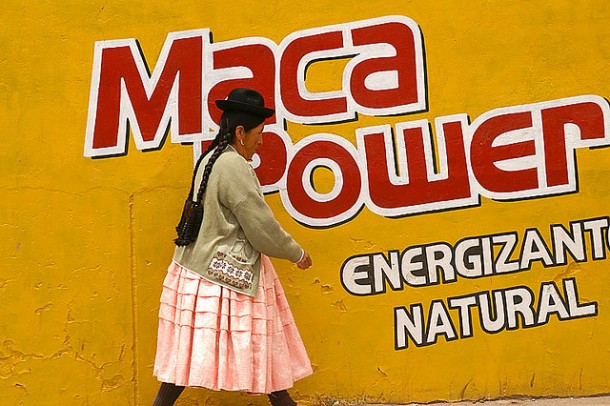The Maca root has been growing for more than 2,000 years in the highest mountains of Peru, but only recently was it found to have certain notable medicinal properties.
The very existence of this root only began to be talked about in 2001, after Cienciano, a little-known Peruvian soccer team won the South American Soccer Cup after defeating the mighty River Plate from Argentina.
What caught everyone’s attention was the extraordinary physical performance of the Peruvian team. By the end of the tournament, it looked almost as if they had barely broken a sweat. Their secret? They took maca before every match.
There are reports that NASA includes maca in astronaut’s diets. Its scientific name is Lepidium peruvianm, also popularly known as Peruvian ginseng, huto-huto, chichira or cholo Viagra.
According to Jorge Alonso, President of the Latin American Society of Phytomedicine, there are around 130 species of maca around the world, 15 of which are in Peru, although they also grow in the Chilean Andes, Bolivia, and Colombia.
This plant is so resistant that it survives and reproduces in extreme climatic conditions – even when it is freezing or even hailing. Clinical tests were recently launched to research the effects and posology of the plant.
Apart from proven energy-enhancing effects, it has been shown to enhance sexual performance in men, and increase fertility and reduce menopause symptoms in women. It has a positive affect on prostate disorders and improves cognitive disorders (memory, reflexes, learning) in the brain, as well as providing many nutritional benefits.
Long lasting effects
“All these effects have been proven and are being studied today through clinical trials,” Alonso says. “Thanks to this research we are able to leave the empirical knowledge stage to get to the scientific stage. The soccer team provided us with proof of maca’s effects. The second most important discovery was its sexual benefits – a great advancement because for years scientists have been looking for a natural alternative to Viagra.”
Aside from consuming maca, the Incas and neighboring communities would feed their animals with the root, which would also aid the reproduction of cattle.
“The experiences of humans with maca have proven positive. For instance, it is very useful for diabetics who tend to have decreased sexual performance. If we compare it to Viagra, the results are not as spectacular or fast. But the plant shows a prolonged effect that goes on for many days after the treatment has ended,” says Alonso.
Today you can find maca in some pharmacies, herbal and health food stores in South America. It normally comes in capsules, drops or powder, but tincture drops have the most efficacy. Be careful with dosage, it can be dangerous for people with hypertension if more than the recommended dose is ingested.
There are some simple recipes with maca, but it is always advised to consume it in minimal quantities and preferably at the beginning of the day.
